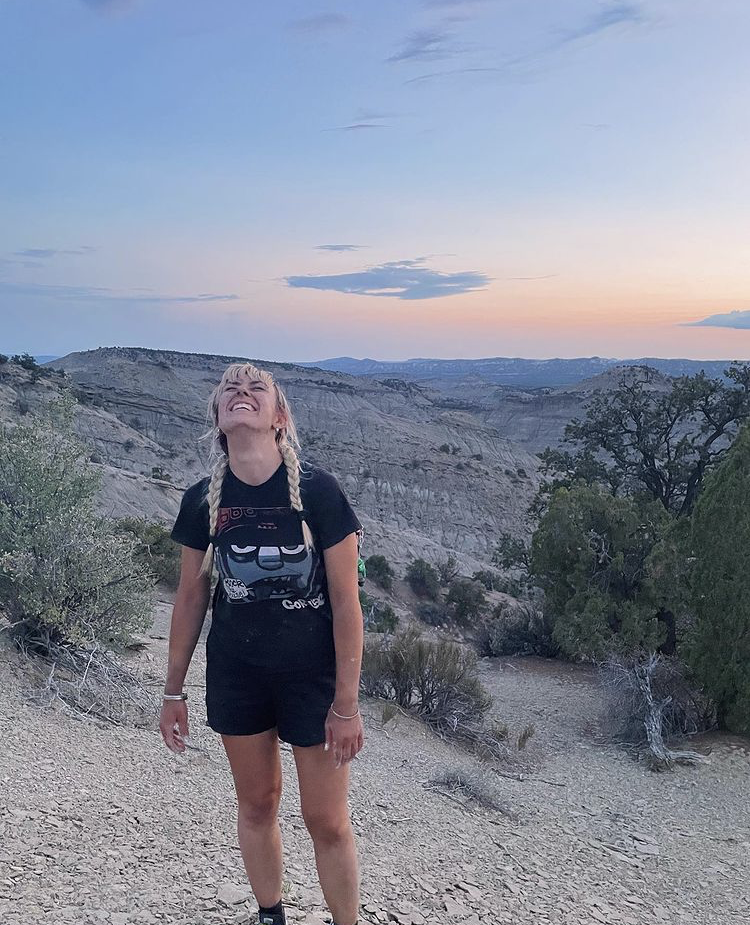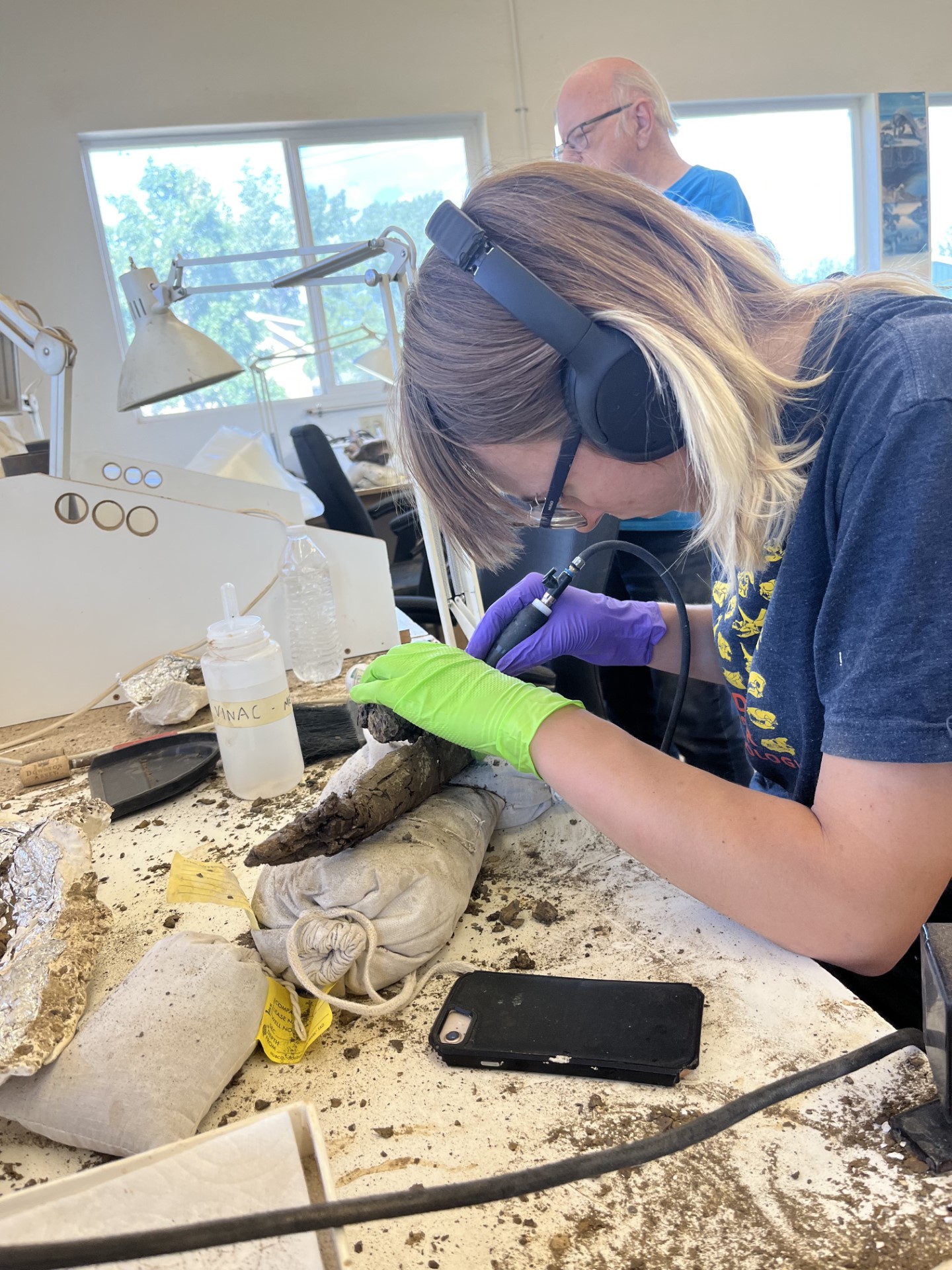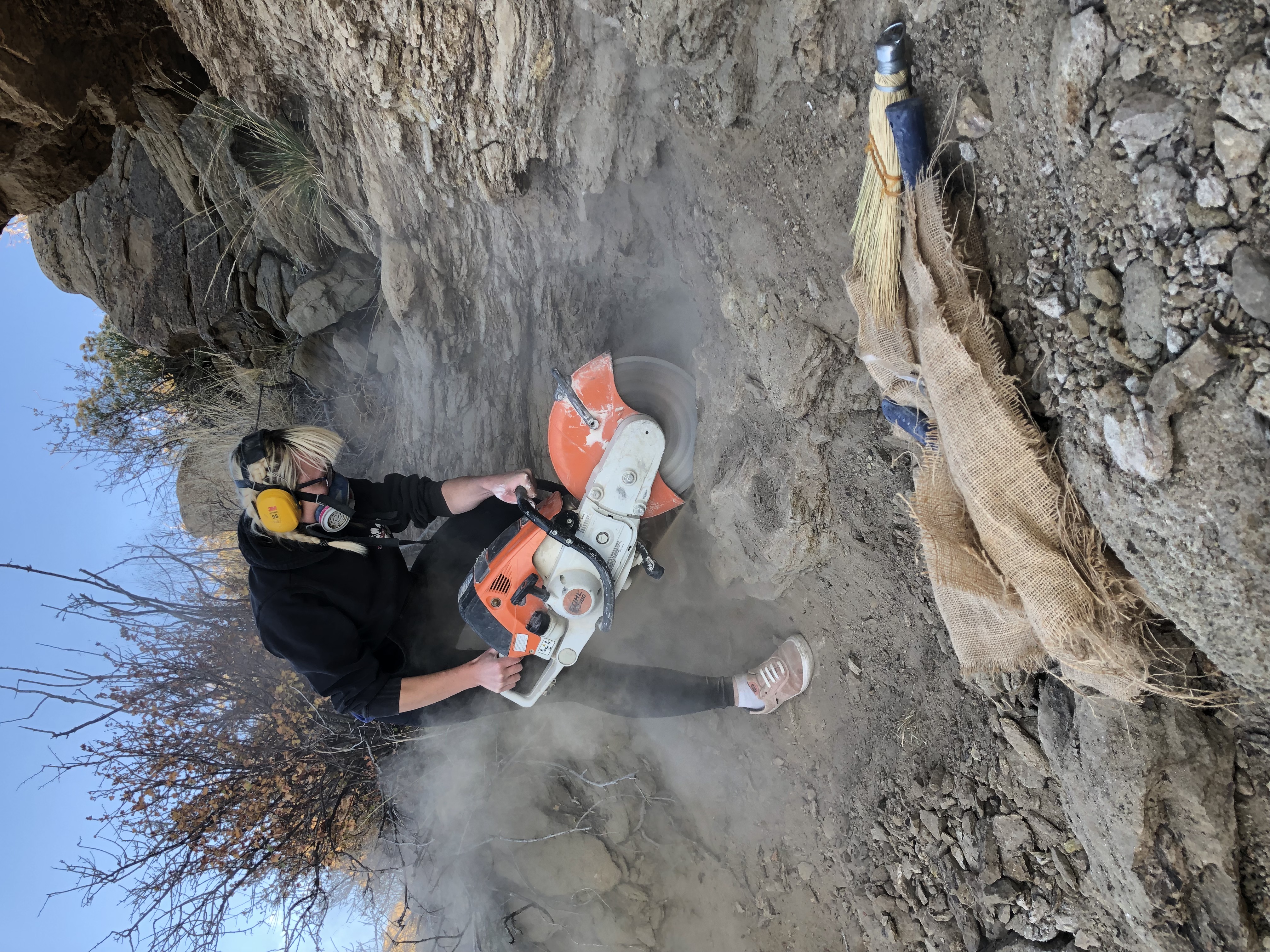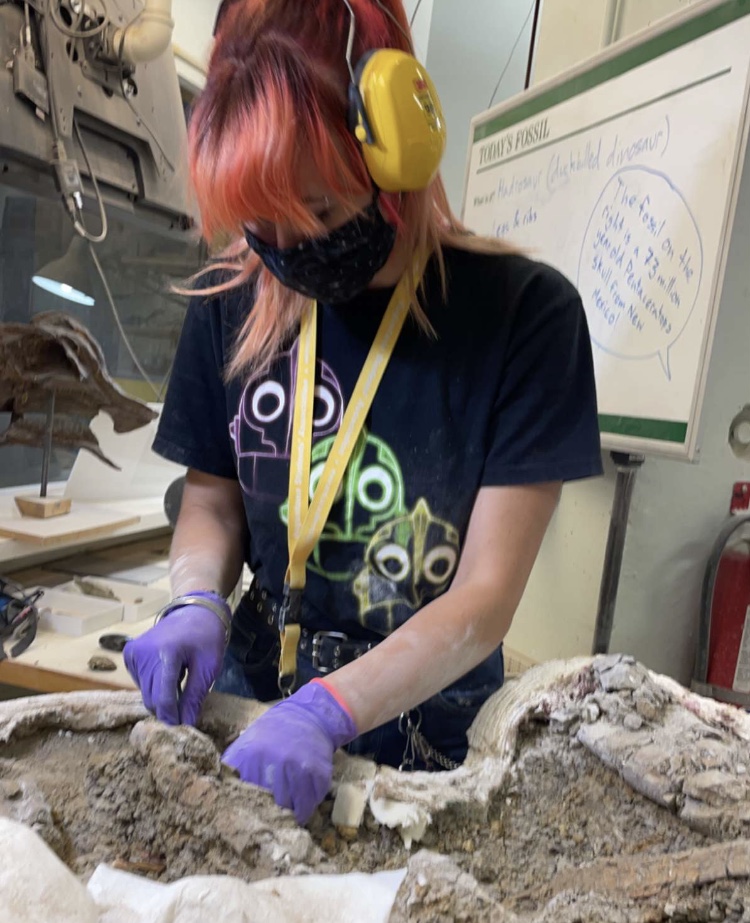
Sadie grew up with a passion for dinosaurs and paleontology which she used to drive a career in paleontology. She chose to earn her undergraduate degree in Biology at the University of Alberta to enter the field of paleontology. At the university, she succeeded in applying to an internship here at the Denver Museum of Nature and Science in the fossil preparation lab. Interning was a wonderful experience and she learned much about the process of fossil collection, preparation, and storage. After graduating from the university, Sadie accepted a staff position at the Museum and now helps run the preparation lab including management of their fantastic team of 100+ volunteers, as the Denver Basin Project Preparator.
Sadie will be attending our annual Girls & Science event at the Denver Museum of Nature & Science on March 1. Girls & Science is a hands-on event that illuminates the myriad possibilities of future careers in science, technology, engineering and math (STEM). This event is dedicated to sparking a passion for science through interactive exploration and play. Girls & Science is committed to inspiring young girls by connecting them with female mentors in STEM fields, fostering curiosity and unveiling diverse opportunities within science, technology, engineering, arts and math.

Sadie Sherman preparing fossils from the Hell Creek Formation of North Dakota (Photo/DMNS)
Tell us more about your job:
As a preparator, it is my job to dig new fossils from the ground and bring them back to the Museum where I delicately remove the dirt and rock from the bones. I remove the dirt and rock from fossils collected from the Denver Basin so that they can be studied and put on display. The fossil bones I work with are small, so I use a microscope and delicate mechanical and pneumatic tools to clean them. I also repair broken fossils using glue and create archival supports for the cleaned fossils. Once the fossils are clean, I also build archival cradles to protect the fossils during transport and storage in our collections.
Why is STEM important within your industry?
STEM and STEM research is the driving force behind everything we do in the fossil preparation lab. We practice intentionality when choosing what to bring back to our collections, prioritizing the collection of specimens that can be used for current in-house research. Before we can use what we collect from nature to answer scientific questions about the history of life on Earth, each specimen must be cleaned and made visible, and that is what we do in the preparation lab.

Sadie Sherman using a rock saw to excavate a fossil from a site in Colorado Springs. (Photo/ Emily Lessner)
When did you decide you wanted to pursue STEM as a career?
According to my parents, I was three years old when I decided I wanted to be a paleontologist when I grew up. I have wanted a career in STEM for as long as I can remember.
What do you like best about your job?
There are many things I like about my job, so it's hard to choose a favorite! However, being able to engage in the generation of new knowledge and then share that information with a wide audience is one of my favorite and most rewarding parts.

Sadie Sherman as a DMNS intern preparing fossils collected from the Wahweap formation of Southern Utah. (Photo/Makayla Hutchinson)
What are the most important skills needed in your job?
It is important to have good hand-eye coordination and attention to detail. Removing rock and dirt from fossils can be tedious and fossils are delicate, so it is valuable to have fine motor skills. It is also important to work well in a team because many activities, especially field work, require large group efforts to accomplish our goals.
Have there been times in your career where you've faced difficult challenges and how were you able to overcome them?
In the past, I had trouble during fieldwork where I felt stressed and unsupported. I reached out to my supervisor about my issues, and she gave me the support and advice I needed to resolve my challenges. In times when difficulties arise, it is important to communicate with your support network so they can be aware of your situation and help you.
Favorite hobby?
I love drawing!
Favorite animal?
Salt water crocodiles, stegosaurus.
What advice would you give to girls of all ages who are interested in STEM?
My advice is to get involved in any way you can! Whether that be volunteering, interning, engaging with STEM research online or any other available opportunity. Building experience in STEM this way will help develop your interests and can guide you toward a career in STEM. This is what helped me since I began as a volunteer and intern before being hired as a preparator.
